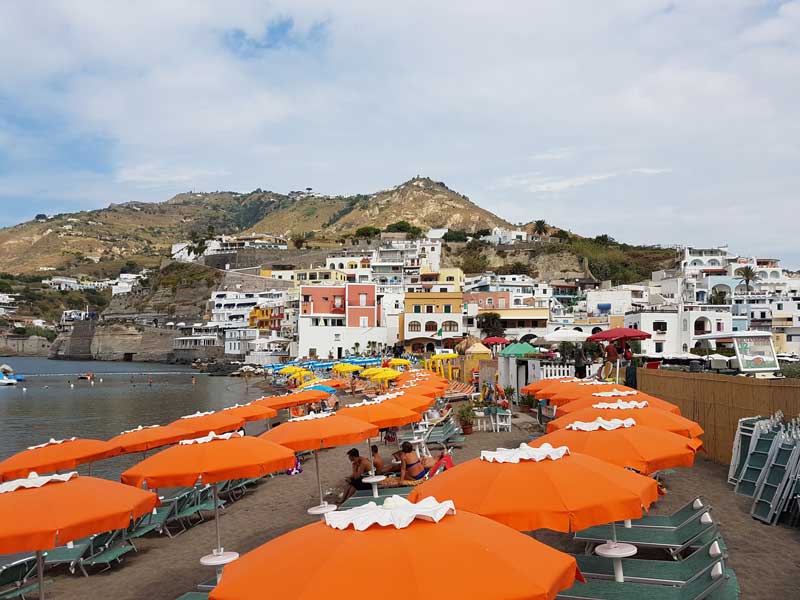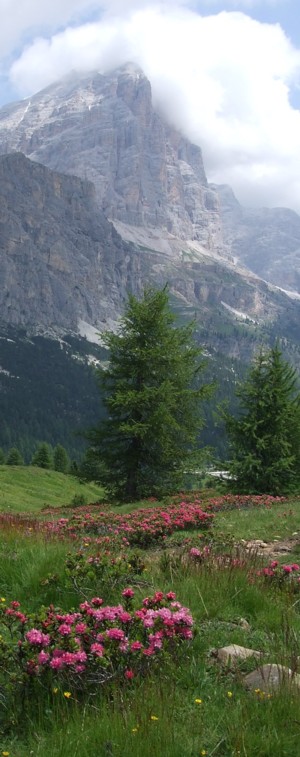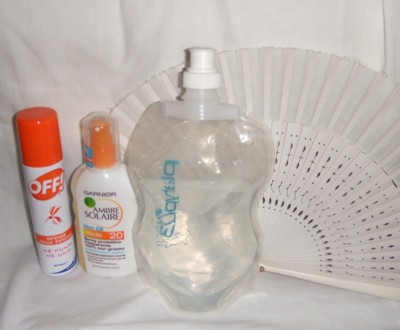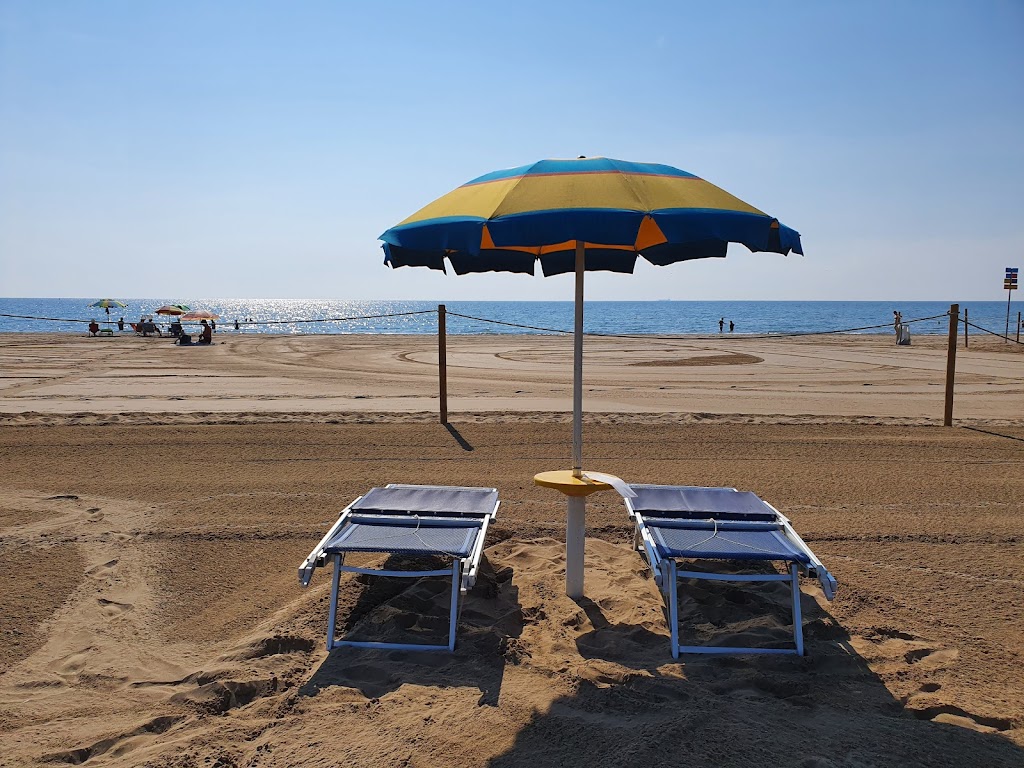This article was written in Venice as July temperatures climbed well above 30 degrees Centigrade, and sightseeing became uncomfortable.
How hot does it get? And when?
Italy stretches from north to south, encompassing barren islands and Alpine peaks, and the climate varies according to location. Most parts of Italy, though, can get uncomfortably hot in the summer. The hottest months are July and August, although heatwaves are also quite common in June, and high temperatures can linger well into September. The average summer temperature will vary depending on your location, but could be as high as 30°C. In unusually hot spells, temperatures can reach 40°C. For general information on the Italian climate, average temperatures in major cities, and for current forecasts, see the meteorological links below. On this page we’ll give an idea of what the heat is like, and how to deal with it.
If you’ve experienced a Mediterranean summer, you’ll already appreciate that the heat in Italy goes beyond anything experienced in northern Europe. Tarmac melts and Rome’s pavements turn into tutti-frutti blends of rubbish wrappers which have sunk into the surface. Dents appear where scooters have been parked. I once watched a bicycle, left for several days, have its tyres sink right into the tarmac. A trip to the sea can cool you down, but sand may burn your bare feet. Metal railings and cashpoint machines become too hot to touch. There are times when you will sweat even if you sit in the shade, doing nothing.
If you’re not used to hot climates, it’s important to change your thinking. Coming from England, I used to maximise my time spent outdoors, thinking “I mustn’t waste the sunshine”. But then I learned that it might be sunny every day for months, and my goal became to avoid the heat, not seek it out. Italian heat isn’t mildly thrilling, like the British version. Here it is often inconvenient, can put vulnerable people at risk, and should be taken seriously. During heatwaves, Italy issues ‘red alerts’ for cities; hospitals are primed in readiness; and sometimes Italian local authorities set up air-conditioned refuges for people at risk, like the elderly. When the councils are short of cash, they advise families to take their fragile relatives to supermarkets or other air-conditioned spaces.
If you are travelling in Italy between June and September, make sure your hotel room has air-conditioning. Some cheaper hotels don’t offer this as standard, so check when you book. Sometimes you pay extra for the facility, but it is worth doing so. A few places have ceiling fans instead – these are better than nothing, but I’d always choose air-conditioning.

Escape the heat
Italians flee their cities in the summer. By August they can seem like ghost towns, inhabited only by tourists. Many shops and businesses close down completely for at least a couple of weeks. Most – although not all – tourist shops and businesses stay open, but in residential areas you’ll find services more limited. The deadest day of all is the 15th August, Ferragosto. Absolutely everything is liable to close down. In an office and residential part of Rome one year I couldn’t even find food to buy, while computer servers all crashed as there was no-one left to maintain them. In an attempt to liven things up, towns sometimes put on Ferragosto entertainments such as firework displays or evening concerts in public squares, although there are few locals left to attend.
On holiday Italians almost invariably choose either mountains or the seaside. They will often go to the same place as half their neighbours, and return there each year. Apparently much of the population of Rome spends August on the beaches of Sardinia. This means that in late July and August you’ll find high demand for accommodation in these areas, while city hotels may offer good prices.
If you are planning a city break, bear in mind that heat can be very uncomfortable in an urban setting. Follow my tips on avoidance tactics below, or try taking a trip out to a cooler location, if you can face the sweaty journey. Around Rome, Tivoli and the Castelli Romani hills offer fresher air and the occasional breeze. In Venice it’s a good idea to take a boat ride over to a lagoon island or to the beach resort of the Lido. Or try dividing your stay between a city and a more refreshing location in the countryside or by the sea. Although you will be competing for hotel rooms with Italians on their summer vacations, a mountainous area like the Dolomites will offer a more comfortable climate.

Avoidance tactics
Local people are experienced at coping with high temperatures. We all know the line about mad dogs and Englishmen. Official medical warnings are issued in Italy each year, advising people to stay indoors between 11am and 5pm. This isn’t very practical if you’re sightseeing, but do try your best to avoid the hottest hours. Many attractions close for a few hours in the middle of the day, anyway, so consider getting up early to have an active early morning, then return to your hotel for a few hours around midday, or enjoy a very leisurely lunch in the shade or in an air-conditioned restaurant. Remember that when the sun is directly overhead in the middle of the day, there is very little shade in city streets.
Take tips from what Italians do. Walking down the street, cross to the shady side. When getting on a bus or train, work out which side will be in the sunshine during your journey and choose a seat on the other. Use the window blinds provided on coaches and trains to keep out the sun. Look out for signs boasting aria condizionata, air-conditioning. Shops, restaurants and cinemas are all good places to while away the hottest hours, and some museums are air-conditioned, too. After 5pm you will still have several hours of daylight, but the sun and heat will be less intense. Hot southern Italian towns come to life as the evening wears on, with families emerging to promenade once the temperature is cooler.
Don’t take on too much – it simply isn’t safe to be too active in very high temperatures. Drink lots of water, cool down with ice-creams, and allow yourself plenty of time to sit with a drink in the shade.
Heat survival kit
1. Carry a fan, easily purchasable in holiday destinations (if you can’t find one or if you’re male and feel this would threaten your masculinity, try to find a suitably sized and rigid booklet or piece of card). These are especially useful on public transport where air conditioning is inadequate; Italians don’t like to open windows.
2. Always carry some water, ideally in a bottle that you can refill at the public drinking water fountains you’ll find throughout Italy. These are perfectly safe to drink from, and are life-savers on baking summer days.
3. Keep some suntan lotion in your bag in the daytime for frequent re-application, and insect repellent in the late afternoon or evening.
4. A pale-coloured umbrella can double as a parasol when the sun gets really hot, and is a useful thing to pack in your suitcase.
Summer clothing
Wear light, pale clothes, and consider a hat. Covering up will protect you from sunburn and sticky plastic seats. Women can carry a light scarf or sarong to cover their exposed skin when entering churches, to sit on and to protect them from sunburn. Again, men may want to think of some equivalent. You must still dress decently even in hot weather: bikinis and topless men are unacceptable away from beaches and you could even be arrested and fined. In churches you should be covered above the knee; bare chests, cleavages, shoulders and upper arms are unacceptable. Italian men do not generally wear shorts, and Italian women do not usually expose as much thigh or shoulder as foreign tourists.
Other summer problems
Power cuts

There is massive demand for electricity in the summer months. As well as the normal high usage of modern life, once offices and homes plug in their air-conditioning units and electric fans, the demand rockets and every year a new usage record is reached. Italian buildings have electricity limits – I worked in one office where it was impossible to use both computers and air-conditioning at the same time. And national and regional supplies are also limited. There was a famous blackout years ago in September when all of Italy lost power for hours – in some places it was days. The authorities try to deal with crises like this by instituting rolling blackouts, when electricity is cut for proscribed periods in different areas. Luckily the last few years seem to have been more stable.
Your hotel should warn you if there are any planned electricity cuts. Look out for words like blackout in the news: this is the expression used for power cuts. It’s always a good idea to carry a pocket torch at night; if the worst happens this will help you find your way home. And if you have an inkling that a power cut is about to happen, stay out of lifts. These power cuts are very rare and hopefully becoming rarer – I mention them because they are a possibility, but visitors shouldn’t be alarmed.
Mosquitoes
One of the biggest problems on summer and autumn holidays in Italy is a very small creature, the zanzara – mosquito. The worst is known to Italians as the zanzara tigre or tiger mosquito. Venice, surrounded by lagoon, is particularly notorious for mosquitoes, but they can strike anywhere in Italy. I suggest – no proof but it’s worth a try – taking vitamin tablets which include B vitamins. Other people advise drinking green tea or tequila, or eating lots of Marmite (also for the B vitamins). Insect repellents do work: buy some before you travel, or pick one up in Italy. There are major brands called ‘Off!’ and ‘Vape’ which produce mosquito repellent sprays, some of which are sweat-resistant. You’ll find products in chemists or supermarkets, where you can also buy electrical repellent devices, either battery-operated or plug-in. Use repellent when you go out in the evening, in shady wooded areas or near water. It may be worth investing in a mosquito net for your windows (or if you have air-conditioning, keep them closed). It’s definitely a good idea to wear long sleeves and trousers in the evening, and to cover your feet – or at least coat them with insect repellent. Some outdoors shops sell clothing which is impregnated with anti-mosquito chemicals, although I haven’t tried this.
Pale-skinned females seem to suffer particularly, and it’s fairly common to experience nasty reactions to bites, with swelling and blistering that can last for days. If you get worried, go to a pharmacist or to the nearest hospital. Pharmacists can provide hydrocortisone creams which help minimise reactions and reduce the pain considerably. An insect bite is a puntura. Anti-histamine tablets may also reduce swelling. I know sufferers who’ve been ridiculed by UK doctors for consulting them over a bite which happened in southern Europe. But in Italy you should be taken more seriously. I know of several people (myself included) who’ve gone to a casualty department with particularly serious mosquito bites: ones which have turned black or swollen up in painful locations like around the eyes. You’ll probably be given a steroid injection and a prescription for still more powerful creams.
> Read my article about Italian beaches
> Packing tips for Italy
On this site
Venice practicalities, including mosquitoes
Useful links
